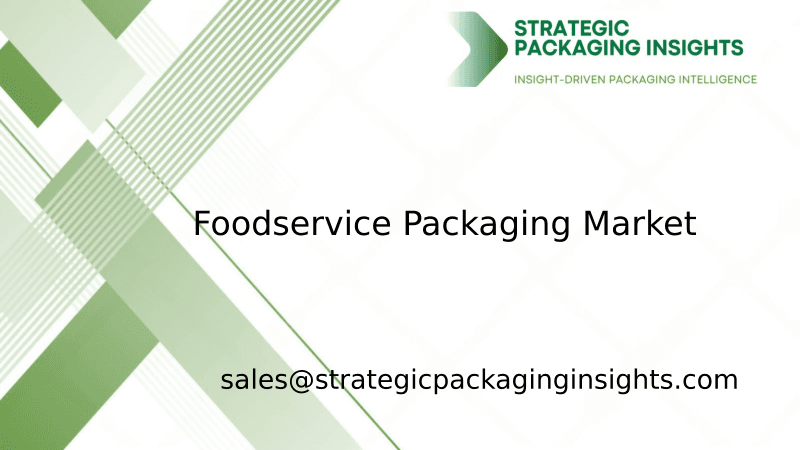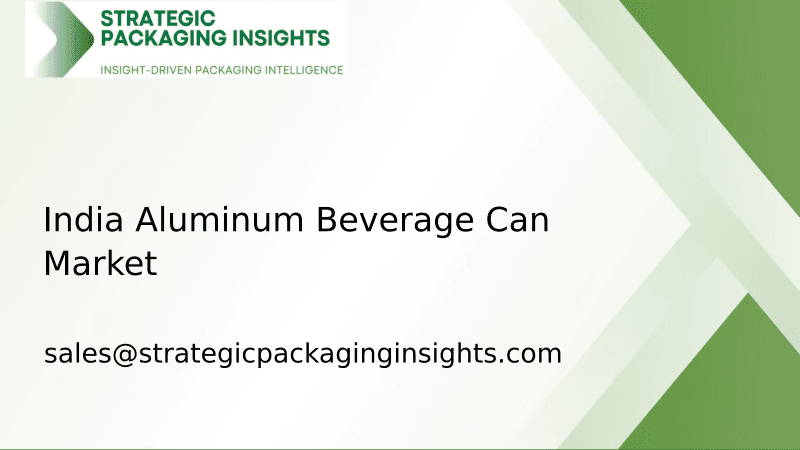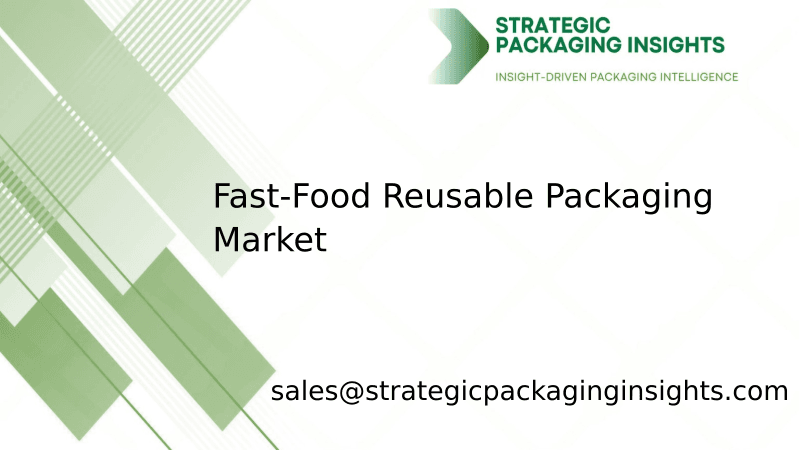- Home
- Eco-Friendly Packaging
- Water Soluble Packaging Films Market Size, Future Growth and Forecast 2033
Water Soluble Packaging Films Market Size, Future Growth and Forecast 2033
Water Soluble Packaging Films Market Segments - by Material Type (Polyvinyl Alcohol, Other Polymers), Application (Detergent Packaging, Agrochemical Packaging, Food Packaging, Others), End-User (Industrial, Consumer), and Region (Asia Pacific, North America, Latin America, Europe, and Middle East & Africa) - Market Dynamics, Growth Opportunities, Strategic Drivers, and PESTLE Outlook (2025–2033)
Water Soluble Packaging Films Market Outlook
The Water Soluble Packaging Films market was valued at $2.8 billion in 2024 and is projected to reach $5.6 billion by 2033, growing at a CAGR of 8.1% during the forecast period 2025–2033. This market is driven by the increasing demand for sustainable and eco-friendly packaging solutions, as consumers and industries alike are becoming more environmentally conscious. The rise in awareness regarding the harmful effects of plastic waste on the environment has led to a surge in the adoption of water-soluble packaging films, which offer a biodegradable alternative. Additionally, advancements in material science have enabled the development of films with enhanced solubility and strength, further propelling market growth. The market is also benefiting from the growing application of these films in various sectors such as agriculture, food, and pharmaceuticals, where they are used for packaging products that require controlled release or protection from moisture.

Despite the promising growth prospects, the market faces certain challenges that could hinder its expansion. One of the primary restraints is the high cost of production associated with water-soluble films, which can be a deterrent for small and medium-sized enterprises. Moreover, the limited availability of raw materials and the complexity involved in the manufacturing process can also pose significant barriers. Regulatory challenges, particularly in regions with stringent environmental laws, may also impact market growth. However, the increasing investments in research and development to improve the cost-effectiveness and performance of these films present significant growth potential. As more companies enter the market and technological advancements continue, the cost of production is expected to decrease, making water-soluble packaging films more accessible to a broader range of industries.
Report Scope
| Attributes | Details |
| Report Title | Water Soluble Packaging Films Market Size, Future Growth and Forecast 2033 |
| Base Year | 2024 |
| Historic Data | 2017-2023 |
| Forecast Period | 2025-2033 |
| Number of Pages | 142 |
| Material Type | Polyvinyl Alcohol, Other Polymers |
| Application | Detergent Packaging, Agrochemical Packaging, Food Packaging, Others |
| End-User | Industrial, Consumer |
| Region | North America, Europe, Asia Pacific, Latin America, Middle East & Africa |
| Customization Available | Yes* |
Opportunities & Threats
The Water Soluble Packaging Films market presents numerous opportunities for growth, driven by the increasing demand for sustainable packaging solutions. As environmental concerns continue to rise, industries are seeking alternatives to traditional plastic packaging, which has led to a surge in demand for biodegradable and water-soluble films. This shift in consumer preference towards eco-friendly products is creating a significant opportunity for manufacturers to expand their product offerings and capture a larger market share. Additionally, the growing application of water-soluble films in various sectors such as agriculture, food, and pharmaceuticals is further driving market growth. These films offer unique benefits such as controlled release and protection from moisture, making them ideal for packaging products that require specific storage conditions.
Another opportunity lies in the technological advancements in material science, which have enabled the development of water-soluble films with enhanced solubility and strength. This has opened up new avenues for innovation and product development, allowing manufacturers to create films that meet the specific needs of different industries. Furthermore, the increasing investments in research and development to improve the cost-effectiveness and performance of these films are expected to drive market growth. As more companies enter the market and technological advancements continue, the cost of production is expected to decrease, making water-soluble packaging films more accessible to a broader range of industries.
However, the market also faces certain threats that could hinder its growth. One of the primary challenges is the high cost of production associated with water-soluble films, which can be a deterrent for small and medium-sized enterprises. Additionally, the limited availability of raw materials and the complexity involved in the manufacturing process can pose significant barriers. Regulatory challenges, particularly in regions with stringent environmental laws, may also impact market growth. Despite these challenges, the increasing demand for sustainable packaging solutions and the growing application of water-soluble films in various sectors present significant growth opportunities for the market.
Market Share Analysis
The competitive landscape of the Water Soluble Packaging Films market is characterized by the presence of several key players who are actively engaged in product development and innovation to gain a competitive edge. The market is moderately fragmented, with a mix of established players and new entrants striving to capture market share. Companies are focusing on expanding their product portfolios and enhancing their production capabilities to meet the growing demand for water-soluble films. Strategic partnerships, mergers, and acquisitions are also common strategies adopted by market players to strengthen their market position and expand their geographical reach.

Among the major companies operating in the market, Kuraray Co., Ltd. holds a significant market share due to its extensive product portfolio and strong distribution network. The company is known for its innovative water-soluble films that cater to various industries, including agriculture, food, and pharmaceuticals. Another key player, Aicello Corporation, is recognized for its high-quality water-soluble films that are widely used in the packaging of detergents and agrochemicals. The company's focus on research and development has enabled it to introduce advanced products that meet the evolving needs of its customers.
Monosol, LLC, a subsidiary of Kuraray, is another prominent player in the market, known for its water-soluble films used in a wide range of applications, including laundry detergents and personal care products. The company's commitment to sustainability and innovation has helped it maintain a strong market presence. Other notable players in the market include Sekisui Chemical Co., Ltd., which offers a diverse range of water-soluble films for various applications, and Cortec Corporation, known for its environmentally friendly packaging solutions.
Additionally, companies like Arrow Greentech Ltd., Amtrex Nature Care Pvt. Ltd., and Soltec Development SAS are also making significant contributions to the market with their innovative product offerings and strategic initiatives. These companies are focusing on expanding their production capacities and enhancing their distribution networks to cater to the growing demand for water-soluble films. As the market continues to evolve, the competitive landscape is expected to witness further consolidation, with key players strengthening their market positions through strategic collaborations and technological advancements.
Key Highlights
- The Water Soluble Packaging Films market is projected to grow at a CAGR of 8.1% from 2025 to 2033.
- Increasing demand for sustainable and eco-friendly packaging solutions is driving market growth.
- Technological advancements in material science are enabling the development of films with enhanced solubility and strength.
- The market is witnessing a surge in demand from sectors such as agriculture, food, and pharmaceuticals.
- High production costs and regulatory challenges are key restraints for market growth.
- Strategic partnerships and mergers are common strategies adopted by market players to strengthen their market position.
- Key players in the market include Kuraray Co., Ltd., Aicello Corporation, and Monosol, LLC.
- Increasing investments in research and development are expected to drive market growth.
- The market is moderately fragmented, with a mix of established players and new entrants.
- Companies are focusing on expanding their product portfolios and enhancing their production capabilities.
Top Countries Insights
In the Water Soluble Packaging Films market, the United States holds a significant position, with a market size of $1.2 billion and a CAGR of 7%. The country's strong focus on sustainability and environmental protection has driven the demand for eco-friendly packaging solutions. Government initiatives promoting the use of biodegradable materials have further fueled market growth. Additionally, the presence of major market players and advanced research facilities contribute to the country's leading position in the market.

China is another key player in the market, with a market size of $900 million and a CAGR of 10%. The country's rapid industrialization and growing consumer awareness about environmental issues have led to an increased demand for water-soluble packaging films. The Chinese government's stringent regulations on plastic waste management and its support for sustainable packaging solutions are significant growth drivers. Moreover, the availability of raw materials and low production costs make China an attractive market for manufacturers.
Germany, with a market size of $700 million and a CAGR of 8%, is a prominent market for water-soluble packaging films in Europe. The country's strong emphasis on environmental sustainability and its well-established packaging industry are key factors driving market growth. Germany's commitment to reducing plastic waste and promoting the use of biodegradable materials aligns with the increasing demand for water-soluble films. The presence of leading market players and advanced technological capabilities further bolster the market's growth prospects.
In Japan, the market for water-soluble packaging films is valued at $600 million, with a CAGR of 6%. The country's focus on innovation and technological advancements in material science has led to the development of high-quality water-soluble films. Japan's stringent environmental regulations and its commitment to reducing plastic waste are significant growth drivers. The country's well-established packaging industry and the presence of key market players contribute to its strong market position.
India, with a market size of $500 million and a CAGR of 12%, is an emerging market for water-soluble packaging films. The country's growing population and increasing consumer awareness about environmental issues are driving the demand for sustainable packaging solutions. Government initiatives promoting the use of biodegradable materials and the presence of a large number of small and medium-sized enterprises are significant growth drivers. India's rapidly expanding packaging industry and its focus on innovation and cost-effective solutions make it a promising market for water-soluble films.
Evolving Market Dynamics (2018–2024) and Strategic Foresight (2025–2033)
| Metrics | 2018–2024 | 2025–2033 |
|---|---|---|
| CAGR | 6.5% | 8.1% |
| Market Size Evolution | $1.8 billion to $2.8 billion | $2.8 billion to $5.6 billion |
| Segment Distribution Shifts | Detergent Packaging Dominant | Food Packaging Growth |
| Regional Contribution Changes | North America Leading | Asia Pacific Growth |
| Technological Impact Factors | Basic Solubility Improvements | Advanced Material Science |
| Client Demand Transformations | Eco-Friendly Focus | Sustainability and Innovation |
Water Soluble Packaging Films Market Segments Insights
Material Type Analysis
The Water Soluble Packaging Films market is segmented by material type into Polyvinyl Alcohol (PVA) and other polymers. Polyvinyl Alcohol is the most widely used material due to its excellent water solubility and film-forming properties. PVA films are extensively used in various applications, including detergent packaging, agrochemical packaging, and food packaging. The demand for PVA films is driven by their biodegradability and ability to dissolve in water, making them an ideal choice for eco-friendly packaging solutions. Additionally, advancements in material science have led to the development of PVA films with enhanced strength and solubility, further boosting their demand.
Other polymers, such as cellulose derivatives and starch-based materials, are also gaining traction in the market. These materials offer unique benefits such as biodegradability and compatibility with various packaging applications. The growing focus on sustainability and the increasing demand for biodegradable packaging solutions are driving the adoption of these materials. Manufacturers are investing in research and development to improve the performance and cost-effectiveness of these polymers, which is expected to drive market growth. The competition among material suppliers is intense, with companies striving to develop innovative products that meet the evolving needs of the packaging industry.
Application Analysis
The application segment of the Water Soluble Packaging Films market includes detergent packaging, agrochemical packaging, food packaging, and others. Detergent packaging is the largest application segment, driven by the increasing demand for single-dose detergent pods and capsules. These films offer convenience and ease of use, making them popular among consumers. The growing awareness about the environmental impact of plastic waste has led to a surge in demand for water-soluble films in detergent packaging. Manufacturers are focusing on developing films with improved solubility and strength to meet the specific requirements of this application.
Agrochemical packaging is another significant application segment, where water-soluble films are used for packaging pesticides, fertilizers, and other agricultural products. These films offer benefits such as controlled release and protection from moisture, making them ideal for agrochemical packaging. The increasing demand for sustainable and eco-friendly packaging solutions in the agriculture sector is driving the growth of this segment. Food packaging is also witnessing significant growth, driven by the increasing demand for biodegradable and water-soluble films in the food industry. These films offer benefits such as moisture resistance and extended shelf life, making them suitable for packaging various food products.
End-User Analysis
The Water Soluble Packaging Films market is segmented by end-user into industrial and consumer segments. The industrial segment is the largest end-user, driven by the increasing demand for water-soluble films in various industrial applications such as detergent packaging, agrochemical packaging, and food packaging. These films offer benefits such as biodegradability and ease of use, making them popular among industrial users. The growing focus on sustainability and the increasing demand for eco-friendly packaging solutions are driving the growth of this segment.
The consumer segment is also witnessing significant growth, driven by the increasing demand for water-soluble films in consumer applications such as personal care products and household cleaning products. These films offer convenience and ease of use, making them popular among consumers. The growing awareness about the environmental impact of plastic waste and the increasing demand for sustainable packaging solutions are driving the growth of this segment. Manufacturers are focusing on developing innovative products that meet the specific needs of consumers, which is expected to drive market growth.
Region Analysis
The Water Soluble Packaging Films market is segmented by region into North America, Europe, Asia Pacific, Latin America, and Middle East & Africa. North America is the largest market, driven by the increasing demand for sustainable packaging solutions and the presence of major market players. The region's strong focus on environmental sustainability and the growing awareness about the harmful effects of plastic waste are driving the demand for water-soluble films. Europe is another significant market, driven by the region's stringent environmental regulations and the increasing demand for biodegradable packaging solutions.
Asia Pacific is the fastest-growing market, driven by the region's rapid industrialization and the increasing demand for sustainable packaging solutions. The growing awareness about environmental issues and the presence of a large number of small and medium-sized enterprises are driving the demand for water-soluble films in the region. Latin America and Middle East & Africa are also witnessing significant growth, driven by the increasing demand for eco-friendly packaging solutions and the growing awareness about the environmental impact of plastic waste. The presence of key market players and the increasing investments in research and development are expected to drive market growth in these regions.
Water Soluble Packaging Films Market Segments
The Water Soluble Packaging Films market has been segmented on the basis of
Material Type
- Polyvinyl Alcohol
- Other Polymers
Application
- Detergent Packaging
- Agrochemical Packaging
- Food Packaging
- Others
End-User
- Industrial
- Consumer
Region
- North America
- Europe
- Asia Pacific
- Latin America
- Middle East & Africa
Primary Interview Insights
What are the key drivers for the Water Soluble Packaging Films market?
What challenges does the market face?
Which regions are expected to witness significant growth?
How are companies addressing the high production costs?
What strategies are key players adopting to strengthen their market position?
Latest Reports

The corrugated board packaging market was valued at $250 billion in 2024 and is projected to reach $380 billion by 2033, growing at a CAGR of 4.5% during the forecast period 2025–2033.

The Water Soluble Packaging Films market was valued at $2.8 billion in 2024 and is projected to reach $5.6 billion by 2033, growing at a CAGR of 8.1% during the forecast period 2025–2033.

The Aluminium Foil Packaging market was valued at $25 billion in 2024 and is projected to reach $40 billion by 2033, growing at a CAGR of 5.5% during the forecast period 2025–2033.

The self-heating food packaging market was valued at $4.5 billion in 2024 and is projected to reach $7.8 billion by 2033, growing at a CAGR of 6.2% during the forecast period 2025–2033.

The Smart Container market was valued at $2.5 billion in 2024 and is projected to reach $8.7 billion by 2033, growing at a CAGR of 14.5% during the forecast period 2025–2033.

The Automatic Labeling Machine market was valued at $2.5 billion in 2024 and is projected to reach $4.8 billion by 2033, growing at a CAGR of 7.2% during the forecast period 2025–2033.

The Hot Melt Glue Labeler market was valued at $1.2 billion in 2024 and is projected to reach $2.3 billion by 2033, growing at a CAGR of 6.5% during the forecast period 2025–2033.

The Ethical Label market was valued at $1.5 billion in 2024 and is projected to reach $3.2 billion by 2033, growing at a CAGR of 8.5% during the forecast period 2025–2033.

The Packaging Tensioner market was valued at $1.2 billion in 2024 and is projected to reach $2.3 billion by 2033, growing at a CAGR of 6.5% during the forecast period 2025–2033.

The foodservice packaging market was valued at $120 billion in 2024 and is projected to reach $180 billion by 2033, growing at a CAGR of 4.5% during the forecast period 2025–2033.

The nano-enabled packaging market was valued at $15.2 billion in 2024 and is projected to reach $35.6 billion by 2033, growing at a CAGR of 9.5% during the forecast period 2025–2033.

The Cold Seal Packaging market was valued at $1.5 billion in 2024 and is projected to reach $2.3 billion by 2033, growing at a CAGR of 4.8% during the forecast period 2025–2033.

The Transparent Barrier Packaging Films market was valued at $12.5 billion in 2024 and is projected to reach $20.3 billion by 2033, growing at a CAGR of 5.8% during the forecast period 2025–2033.

The Flatback Tape market was valued at $2.5 billion in 2024 and is projected to reach $4.1 billion by 2033, growing at a CAGR of 5.8% during the forecast period 2025–2033.

The packer bottle market was valued at $3.5 billion in 2024 and is projected to reach $5.8 billion by 2033, growing at a CAGR of 5.2% during the forecast period 2025–2033.

The Canada Nano-Enabled Packaging Food Beverages market was valued at $1.2 billion in 2024 and is projected to reach $3.5 billion by 2033, growing at a CAGR of 12.5% during the forecast period 2025–2033.

The India Aluminum Beverage Can market was valued at $1.2 billion in 2024 and is projected to reach $2.5 billion by 2033, growing at a CAGR of 8.5% during the forecast period 2025–2033.

The fast-food reusable packaging market was valued at $1.2 billion in 2024 and is projected to reach $3.5 billion by 2033, growing at a CAGR of 12.5% during the forecast period 2025–2033.

The pallets market was valued at $59.91 billion in 2024 and is projected to reach $88.69 billion by 2033, growing at a CAGR of 4.5% during the forecast period 2025–2033.

The lamination adhesives market was valued at $2.5 billion in 2024 and is projected to reach $4.1 billion by 2033, growing at a CAGR of 5.8% during the forecast period 2025–2033.

The garment packing machine market was valued at $1.2 billion in 2024 and is projected to reach $2.5 billion by 2033, growing at a CAGR of 8.5% during the forecast period 2025–2033.

The shrink bags market was valued at $3.5 billion in 2024 and is projected to reach $5.8 billion by 2033, growing at a CAGR of 5.2% during the forecast period 2025–2033.

The beverage packaging market was valued at $128 billion in 2024 and is projected to reach $186 billion by 2033, growing at a CAGR of 4.2% during the forecast period 2025–2033.

The North America Freight and Logistics market was valued at $1,200 billion in 2024 and is projected to reach $1,800 billion by 2033, growing at a CAGR of 4.5% during the forecast period 2025–2033.

The Anti-Counterfeiting Packaging market was valued at $105 billion in 2024 and is projected to reach $182 billion by 2033, growing at a CAGR of 6.5% during the forecast period 2025–2033.

The corrugated board packaging market was valued at $250 billion in 2024 and is projected to reach $380 billion by 2033, growing at a CAGR of 4.5% during the forecast period 2025–2033.

The Water Soluble Packaging Films market was valued at $2.8 billion in 2024 and is projected to reach $5.6 billion by 2033, growing at a CAGR of 8.1% during the forecast period 2025–2033.

The Aluminium Foil Packaging market was valued at $25 billion in 2024 and is projected to reach $40 billion by 2033, growing at a CAGR of 5.5% during the forecast period 2025–2033.

The self-heating food packaging market was valued at $4.5 billion in 2024 and is projected to reach $7.8 billion by 2033, growing at a CAGR of 6.2% during the forecast period 2025–2033.

The Smart Container market was valued at $2.5 billion in 2024 and is projected to reach $8.7 billion by 2033, growing at a CAGR of 14.5% during the forecast period 2025–2033.

The Automatic Labeling Machine market was valued at $2.5 billion in 2024 and is projected to reach $4.8 billion by 2033, growing at a CAGR of 7.2% during the forecast period 2025–2033.

The Hot Melt Glue Labeler market was valued at $1.2 billion in 2024 and is projected to reach $2.3 billion by 2033, growing at a CAGR of 6.5% during the forecast period 2025–2033.

The Ethical Label market was valued at $1.5 billion in 2024 and is projected to reach $3.2 billion by 2033, growing at a CAGR of 8.5% during the forecast period 2025–2033.

The Packaging Tensioner market was valued at $1.2 billion in 2024 and is projected to reach $2.3 billion by 2033, growing at a CAGR of 6.5% during the forecast period 2025–2033.

The foodservice packaging market was valued at $120 billion in 2024 and is projected to reach $180 billion by 2033, growing at a CAGR of 4.5% during the forecast period 2025–2033.

The nano-enabled packaging market was valued at $15.2 billion in 2024 and is projected to reach $35.6 billion by 2033, growing at a CAGR of 9.5% during the forecast period 2025–2033.

The Cold Seal Packaging market was valued at $1.5 billion in 2024 and is projected to reach $2.3 billion by 2033, growing at a CAGR of 4.8% during the forecast period 2025–2033.

The Transparent Barrier Packaging Films market was valued at $12.5 billion in 2024 and is projected to reach $20.3 billion by 2033, growing at a CAGR of 5.8% during the forecast period 2025–2033.

The Flatback Tape market was valued at $2.5 billion in 2024 and is projected to reach $4.1 billion by 2033, growing at a CAGR of 5.8% during the forecast period 2025–2033.

The packer bottle market was valued at $3.5 billion in 2024 and is projected to reach $5.8 billion by 2033, growing at a CAGR of 5.2% during the forecast period 2025–2033.

The Canada Nano-Enabled Packaging Food Beverages market was valued at $1.2 billion in 2024 and is projected to reach $3.5 billion by 2033, growing at a CAGR of 12.5% during the forecast period 2025–2033.

The India Aluminum Beverage Can market was valued at $1.2 billion in 2024 and is projected to reach $2.5 billion by 2033, growing at a CAGR of 8.5% during the forecast period 2025–2033.

The fast-food reusable packaging market was valued at $1.2 billion in 2024 and is projected to reach $3.5 billion by 2033, growing at a CAGR of 12.5% during the forecast period 2025–2033.

The pallets market was valued at $59.91 billion in 2024 and is projected to reach $88.69 billion by 2033, growing at a CAGR of 4.5% during the forecast period 2025–2033.

The lamination adhesives market was valued at $2.5 billion in 2024 and is projected to reach $4.1 billion by 2033, growing at a CAGR of 5.8% during the forecast period 2025–2033.

The garment packing machine market was valued at $1.2 billion in 2024 and is projected to reach $2.5 billion by 2033, growing at a CAGR of 8.5% during the forecast period 2025–2033.

The shrink bags market was valued at $3.5 billion in 2024 and is projected to reach $5.8 billion by 2033, growing at a CAGR of 5.2% during the forecast period 2025–2033.

The beverage packaging market was valued at $128 billion in 2024 and is projected to reach $186 billion by 2033, growing at a CAGR of 4.2% during the forecast period 2025–2033.

The North America Freight and Logistics market was valued at $1,200 billion in 2024 and is projected to reach $1,800 billion by 2033, growing at a CAGR of 4.5% during the forecast period 2025–2033.

The Anti-Counterfeiting Packaging market was valued at $105 billion in 2024 and is projected to reach $182 billion by 2033, growing at a CAGR of 6.5% during the forecast period 2025–2033.